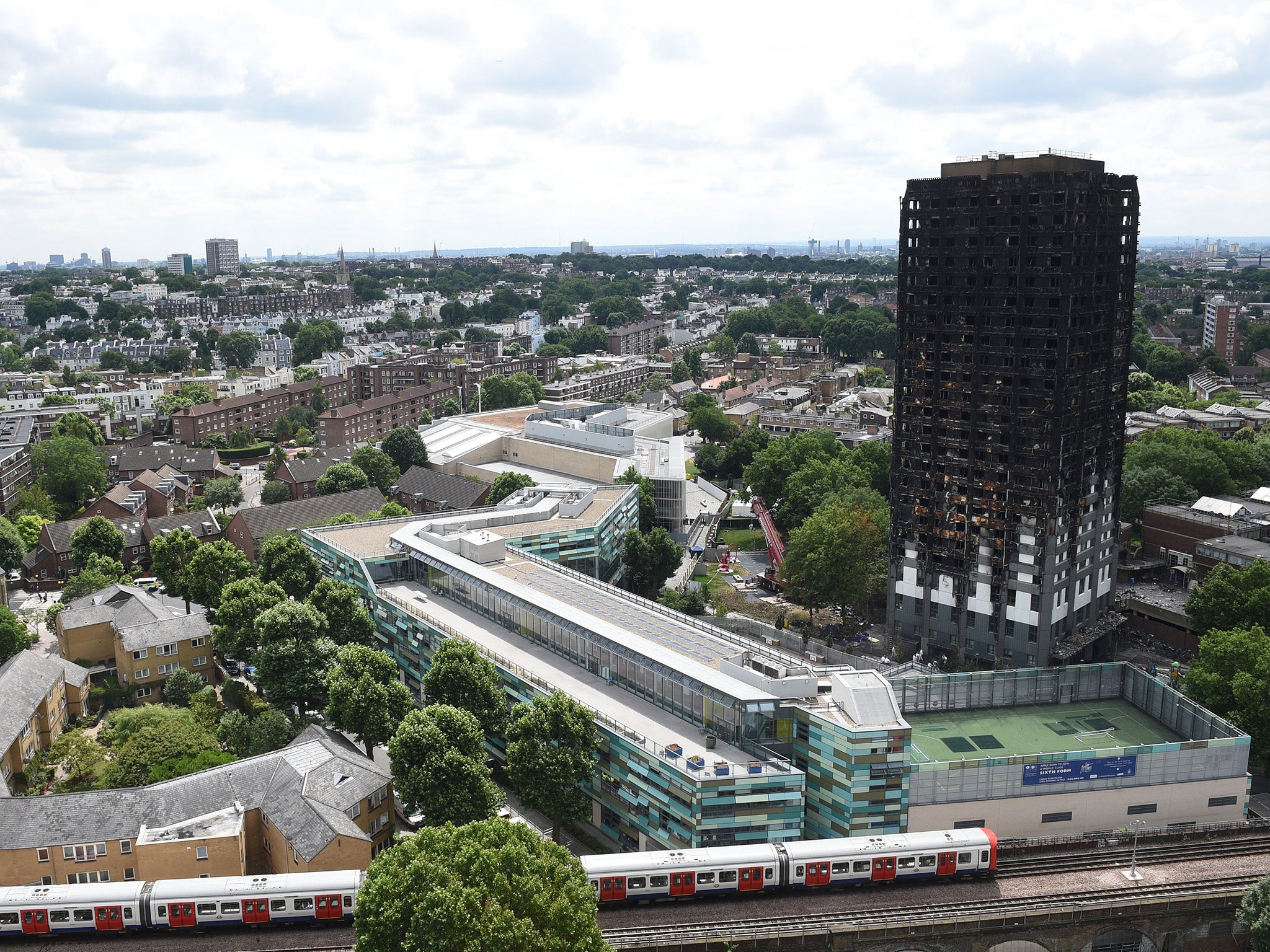Grenfell Tower fire: Different ‘flammable’ cladding varieties not being tested by Government
Exclusive: Combustibility testing currently limited to aluminium composite material panels but fire experts warn many other types are likely to fail Government’s own safety standard

"Combustible" cladding similar to the panels at the centre of the criminal investigation into the Grenfell Tower fire is not being tested by the Government, The Independent has learned.
Testing is currently being limited to panels made of aluminium composite material (ACM) – the type that is believed to have aided the unprecedented spread of the blaze at the 24-storey building last month.
At least 200 samples from high-rise blocks in 54 local authorities have failed testing, according to a Department for Communities and Local Government (DCLG) spokesperson, all of which were ACM.
But fire safety experts warned The Independent the tests could be the tip of the iceberg, with many other types of cladding likely to fail the Government’s own standard for fire safety.
Non-ACM cladding systems CEP and Carea are not made of aluminium, but have a near identical construction to the Reynobond ACM panels used on Grenfell Tower.
Niall Rowan, COO of the Association for Specialist Fire Protection, told The Independent: “If you put this cladding through government testing, it would fail, I would put money on it.
“They are different materials to the Reynobond but they would all have a similar reaction to fire under the fire test.”
The Government’s testing scheme has been measuring cladding to a combustibility grade of “A2” or better, which requires material to be of “limited combustibility”.
A government spokesperson said: “A test failure means that the cladding does not meet the requirements for limited combustibility in current building regulations."
But Mr Rowan said the Government’s own fire safety guidance – building regulations set out in Approved Document B – do not require cladding to be of “A2” standard or limited combustibility.
Instead, the building regulations indicate class 0 (Euroclass B) for all external surfaces for tall buildings, a lower fire safety score.
“These products are all Euroclass B (also known as Class 0), they are not looking to be limited combustibility, and you’re going to find them all over the place, on lots of buildings,” he said.

“The Government’s gone chasing after cladding and missing the bigger picture – they are saying: ‘We want limited combustibility,’ but the construction industry has been reading building regulations as Euroclass B for years.
“This is why we have been pushing for a review of the building regulations for years and why many in the fire sector are very angry because this should not have happened.”
The Government announced last week that it would extend its testing after the 100 per cent failure rate led many to question the reliability of its methods.
Tests had previously been limited to the core of the panels and not the structure as a whole, which sources told The Independent would not form an accurate picture of how a building would react in a fire.
Six ACM cladding systems will be analysed with different varieties of insulation, including unmodified polyethylene, fire retardant polyethylene, and non-combustible mineral, a DCLG spokesperson said.
But the testing has not been extended to other types of panels.
Landlords who have sent in samples of non-ACM cladding have reportedly been told testing of these panels is not being prioritised, despite communities secretary Sajid Javid urging local authorities to send in samples as soon as possible.
In a letter to Mr Javid, Lib Peck, leader of Labour-led Lambeth Council, said: “Why is this ACM testing continuing when it is clear that all will fail? Surely we need to establish whether other forms of cladding are combustible?”
The testing process raises wider questions around the suitability of building regulations.
Reynobond aluminium panels are still certified by the British Board of Agrément (BBA) as “fit for their intended use provided they are installed, used and maintained as set out in this certification.”
The cladding’s approval has not been withdrawn despite manufacturer Arconic removing the panelling from the market due to concerns over its fire safety.
CEP and Carea also hold active certificates from the independent body, seen as a “passport” for safety in the industry.
One construction industry insider said ongoing BBA certification could be giving local authorities and private landlords “undue confidence” as to the safety of materials fitted to their buildings.
The BBA is able to suspend or withdraw a certificate with immediate effect.
John Albon, head of approvals at the BBA, said the body had been attempting to contact the Reynobond certificate holder and would review its position in light of any new information.
When asked about the safety of ACM systems Reynobond, alubond, vitrabond and elval colour cladding, and non-ACM systems CEP and Carea, he added: “We consider that the products remain fit for purpose, provided that it is used in accordance with the terms of the certificate and with the requirements of the national building regulations.”
Mr Rowan said building regulations and their enforcement needed urgent reform to create more robust fire safety practices.
“The building regulations’ requirement for external fire spread is that external walls of the building should adequately resist spread of fire over the walls. So if you’re a builder you think ‘what does that mean?’” he said.
“Enforcement of the regulations is not as good as it could be and that is a big problem in the construction industry. Failure to monitor the quality of construction is a systemic problem.”
Join our commenting forum
Join thought-provoking conversations, follow other Independent readers and see their replies
Comments
Bookmark popover
Removed from bookmarks